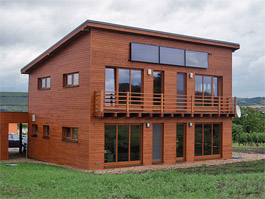
The effort to save increases the interest in low-energy houses
 |
"Due to rising energy prices, clients have recently been interested not only in the sale price of the property but also in the costs associated with its operation," stated the head of bezrealitky.cz. However, the interest has not yet translated into actual sales. "Currently, the supply of low-energy buildings in the Czech Republic is insufficient," added Havrlant.
The construction of environmentally friendly houses is also supported by the state subsidy program Green Savings. However, the support only concerns so-called passive houses, not buildings with low-energy standards. Additionally, only individual builders can apply for the subsidy; it does not apply to development companies. "These criteria are not a motivation for most developers to take energy-saving measures, and I don't believe this subsidy will invigorate the market for energy-efficient homes," noted Řežáb from JRD.
For a property to be classified as low-energy, its annual heat consumption for heating must not exceed 50 kilowatt-hours per square meter. This is up to 60% less than that of conventional buildings, claims Daniel Morávek, sales director at Atrea, which specializes in energy-efficient heating of buildings and air conditioning. The annual heat consumption for passive houses is a maximum of 15 kWh per square meter of heated area.
The English translation is powered by AI tool. Switch to Czech to view the original text source.
0 comments
add comment











